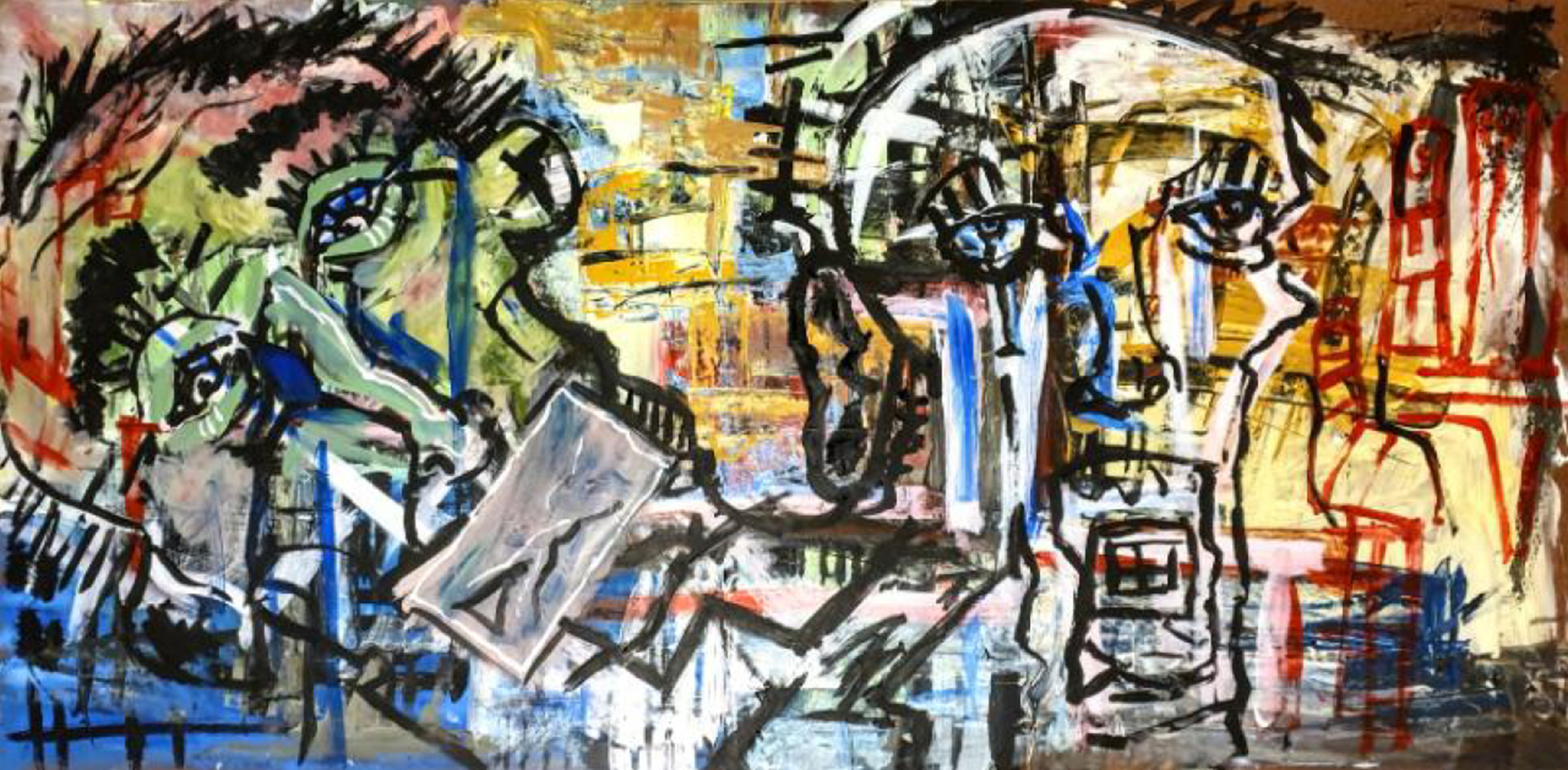AP Art of the Week
Spotlight on Artist Orlys Gonzalez
Welcome to The Elective’s digital art museum, dedicated to the incredible work of AP Arts students. This week we feature a work in wood, paint, and marker made by Orlys Gonzalez from Coral Reef Senior High School in Miami, FL.
Welcome to The Elective’s digital art museum, dedicated to the incredible work of AP Arts students. Each week we highlight a work or series created in one of the AP Arts concentrations—AP 2-D Art and Design, 3-D Art and Design, and AP Drawing (the AP Program also offers Art History and Music Theory)—as well as a statement from the artist (and, occasionally, their teacher).
From the first cave paintings to contemporary breakthroughs in virtually reality, art, in all its forms, has been a crucial way for people to process, make sense of, comment on, and grapple with the world around them. In 2020, there is a lot to process and grapple with—and AP Art students have risen to the challenge. The work many of them submitted in their final portfolios is explicitly of the moment, from commentary on the covid-19 pandemic to the celebration of people of color to the nature of heroism in perilous times.
The work is often challenging and provocative but always insightful, inspiring, and expansive.
This week we feature a work in wood, paint, and marker made by Orlys Gonzalez from Coral Reef Senior High School in Miami, FL.

Here’s Orlys’ statement on the work:
"I grew up in violent, but colorful, surroundings where people's expressions were full of life and color even when they themselves weren't. I was fascinated by these emotions and wanted to investigate on the beauty of ugly circumstances. Choosing how to express my idea wasn't easy, but I remembered that my house was filled with construction materials and I was always allowed to play with what was left, so that's what I used.
This piece was made using plywood, scrap wood, spackling paste, acrylic house paint, paint markers, and tissue paper. The surface was built, and then texture, acrylic paint, and tissue paper were applied.
This investigation has turned out very differently than what I expected. When I did my first main piece, it had a color separation of three squared sections that showed a main physical conflict in the middle and two secondary outcomes on the sides. I loved the idea of the color separations so much I decided to focus on perfecting it. When I did the second main piece, I decided the color separations didn't have to be squared and instead have a main central color separation and some smaller ones. The third main piece included a separation of four sides but it was now physical. For the fourth main piece, I was inspired by the way markers bleed from one page to another and wanted to have a separation of two images overlapping and have three color separated sections."
Here are a few more pieces from Orlys’ portfolio:

This was made with plywood, scrap wood, spackling paste, cardboard, acrylic house paint, paint markers, and tissue paper. The surface was built, texture was applied, acrylic paint was used, then water was applied.

Soldiers and crooks. This was made with plywood, scrap wood, spackling paste, acrylic house paint, paint markers, and oil bars. The surface was built, and paint and texture were carefully applied simultaneously.

Right to speak freely taken away by censorship. This was made with plywood, acrylic paint, and acrylic medium. The surface was prepared with acrylic paint, it was scraped, and more paint was added on top.

I made this with paper, acrylic paint, and oil bars. The paper was washed in acrylic paint, acrylic paint and oil bars were applied, then water was sprayed on it.

This was made with plywood, scrap wood, canvas, acrylic paint, oil sticks, spray paint, cardboard, spackling paste, and a tree branch. Surfaces were built, texture added, paint added, canvases were place on top and bottom, and the tree branch was added.
Student statements are lightly edited for clarity.


